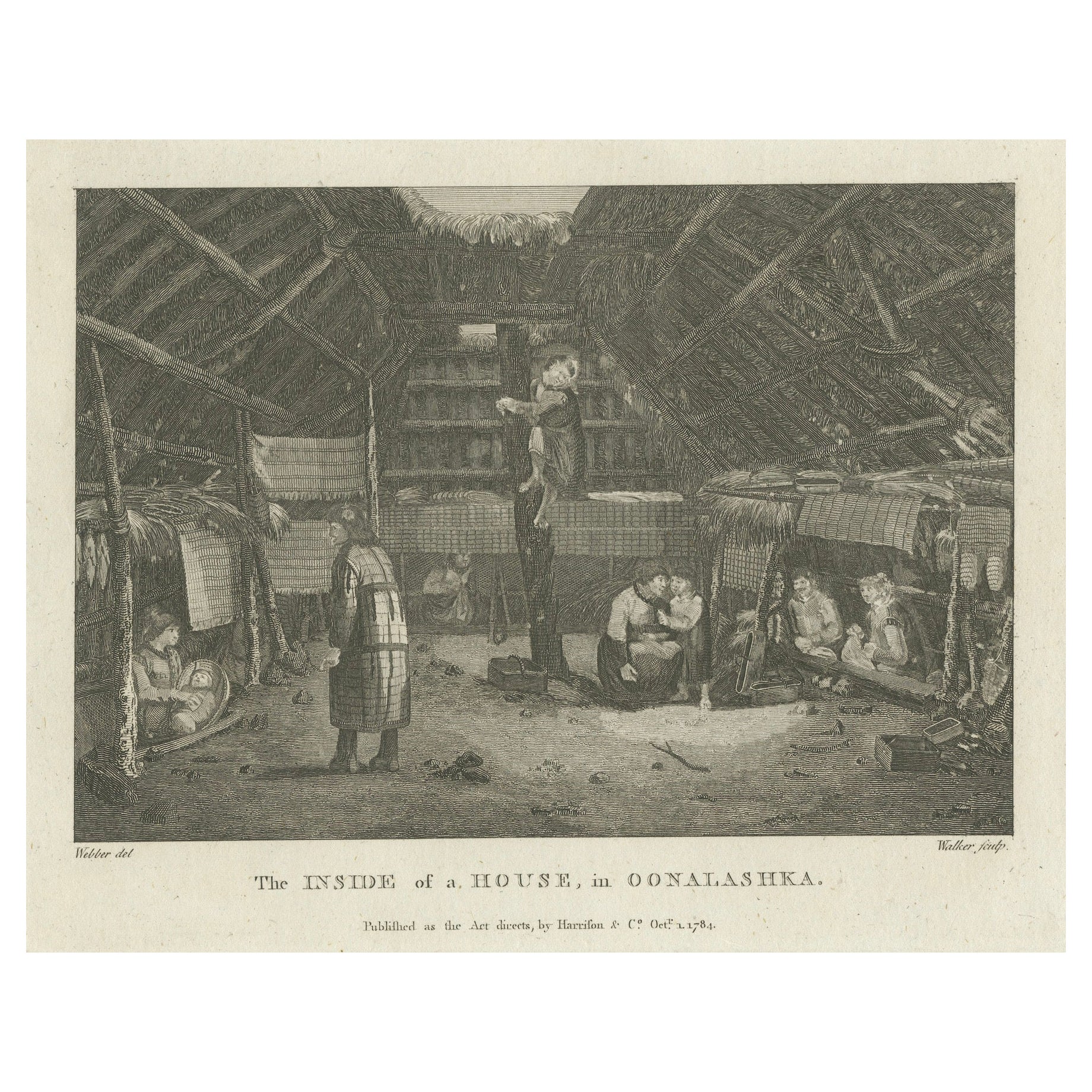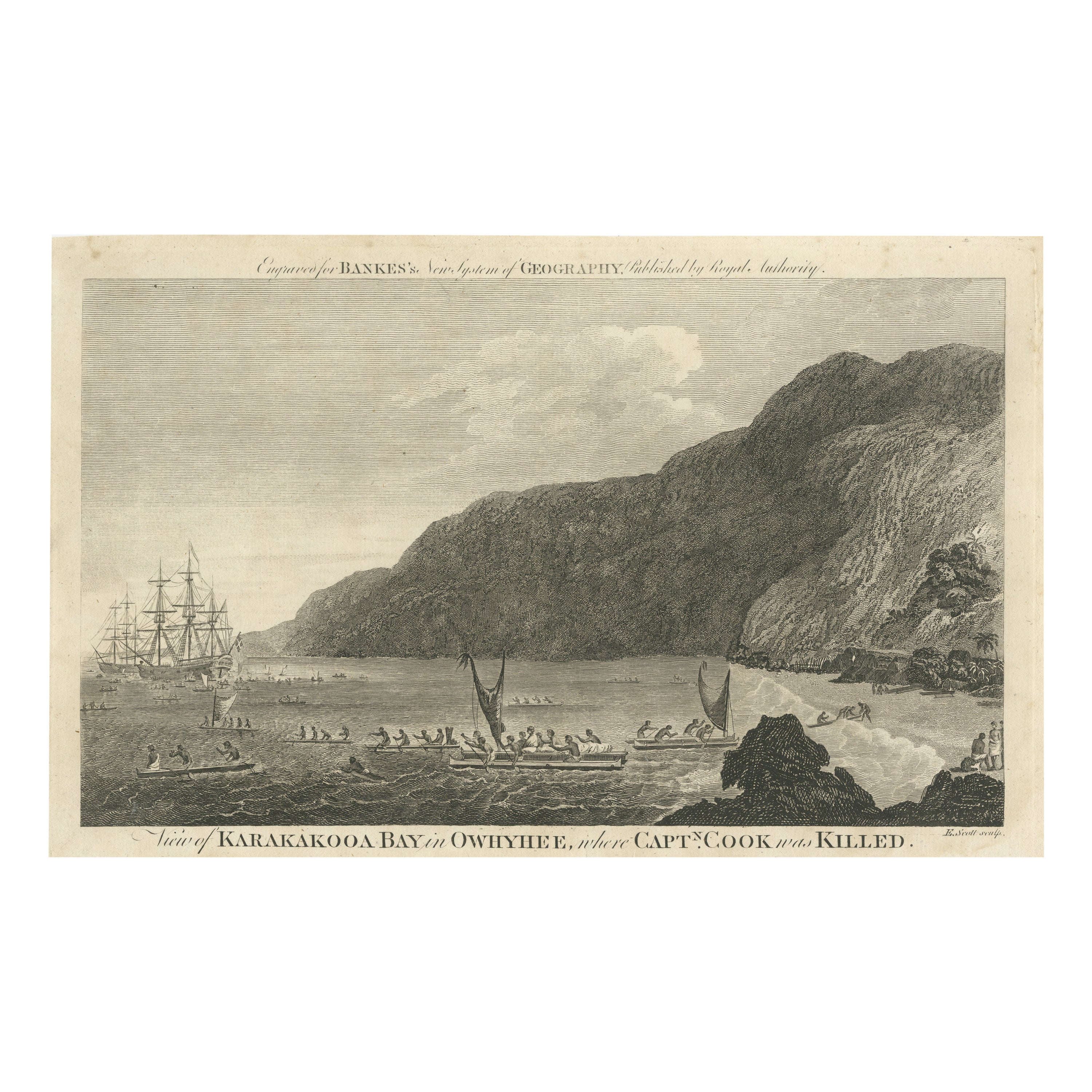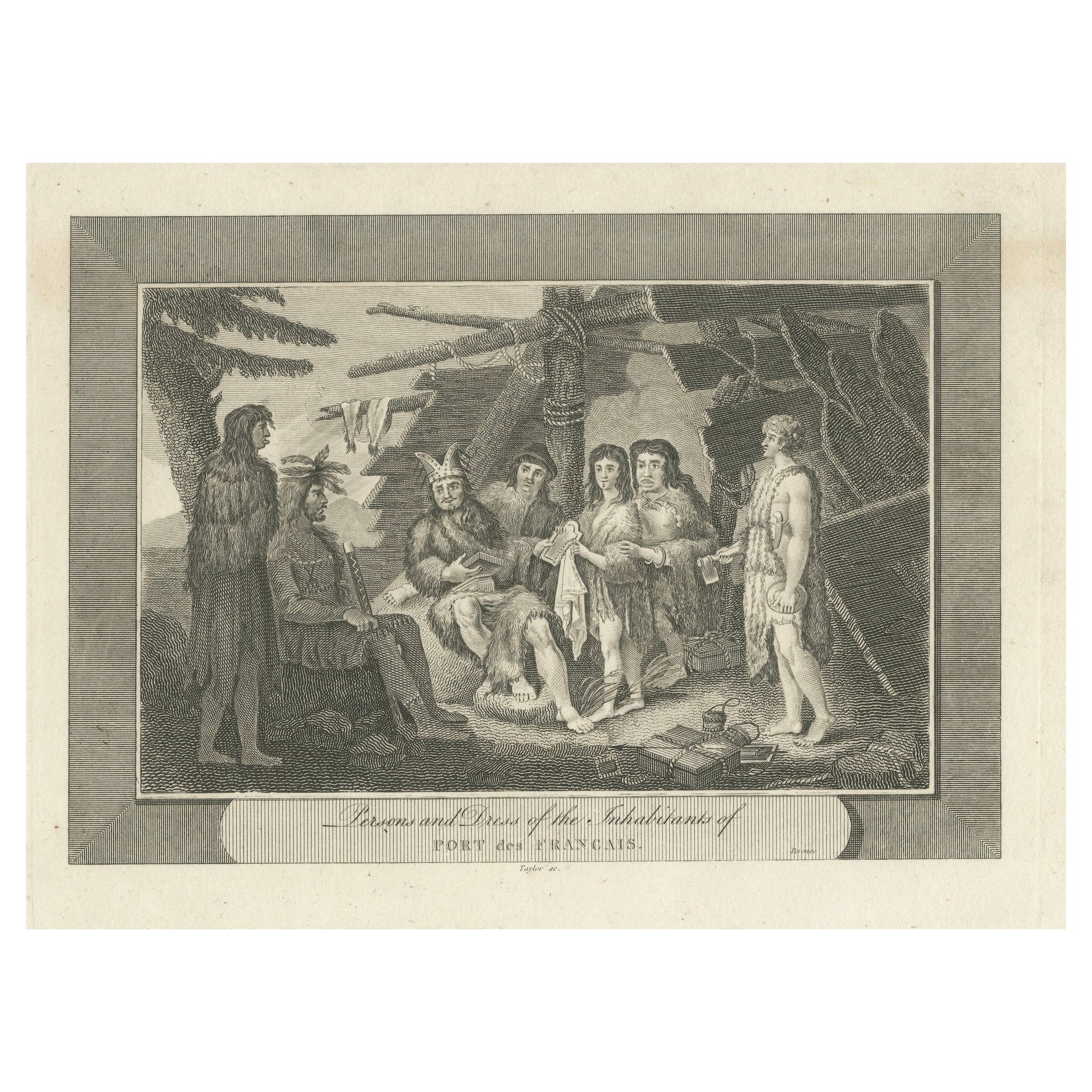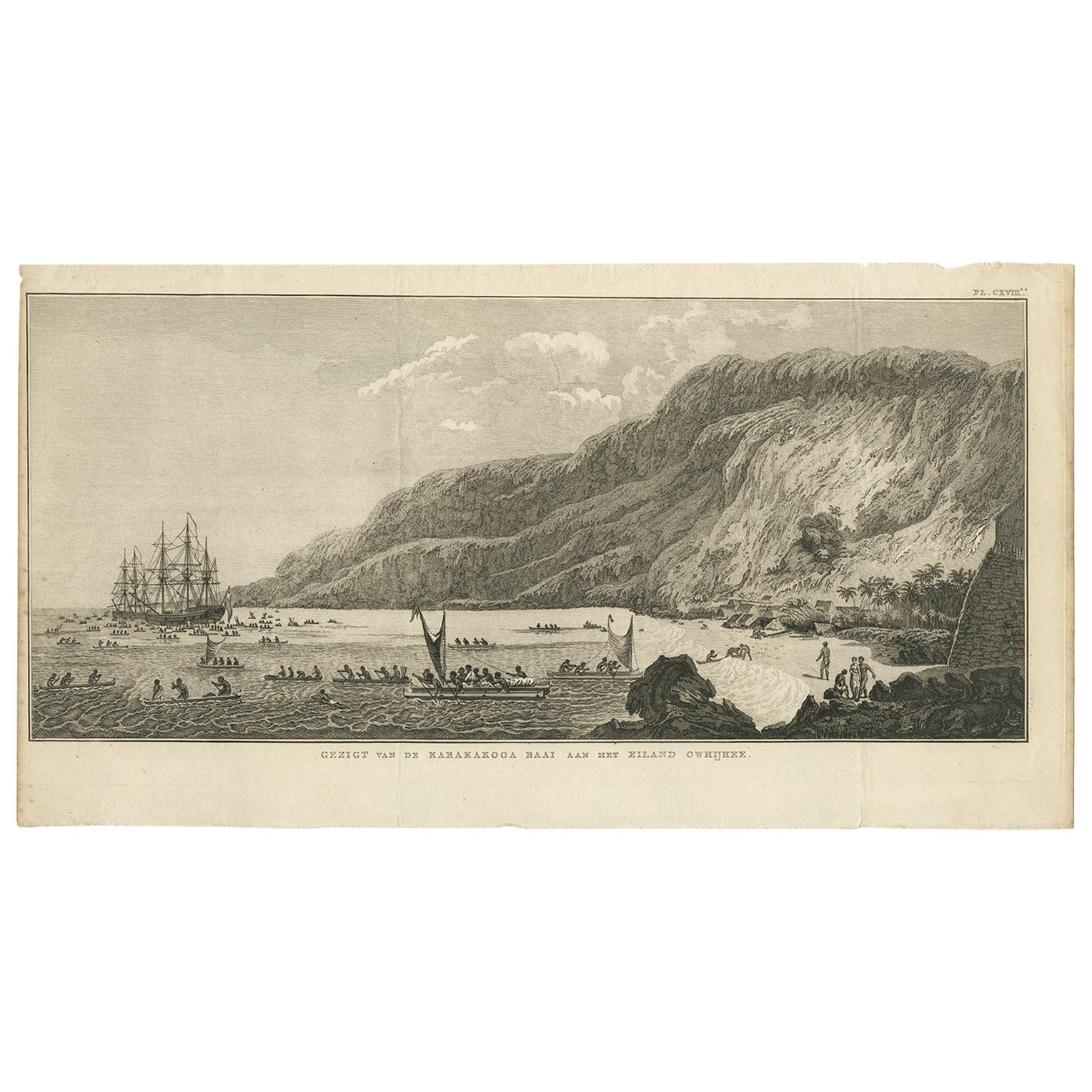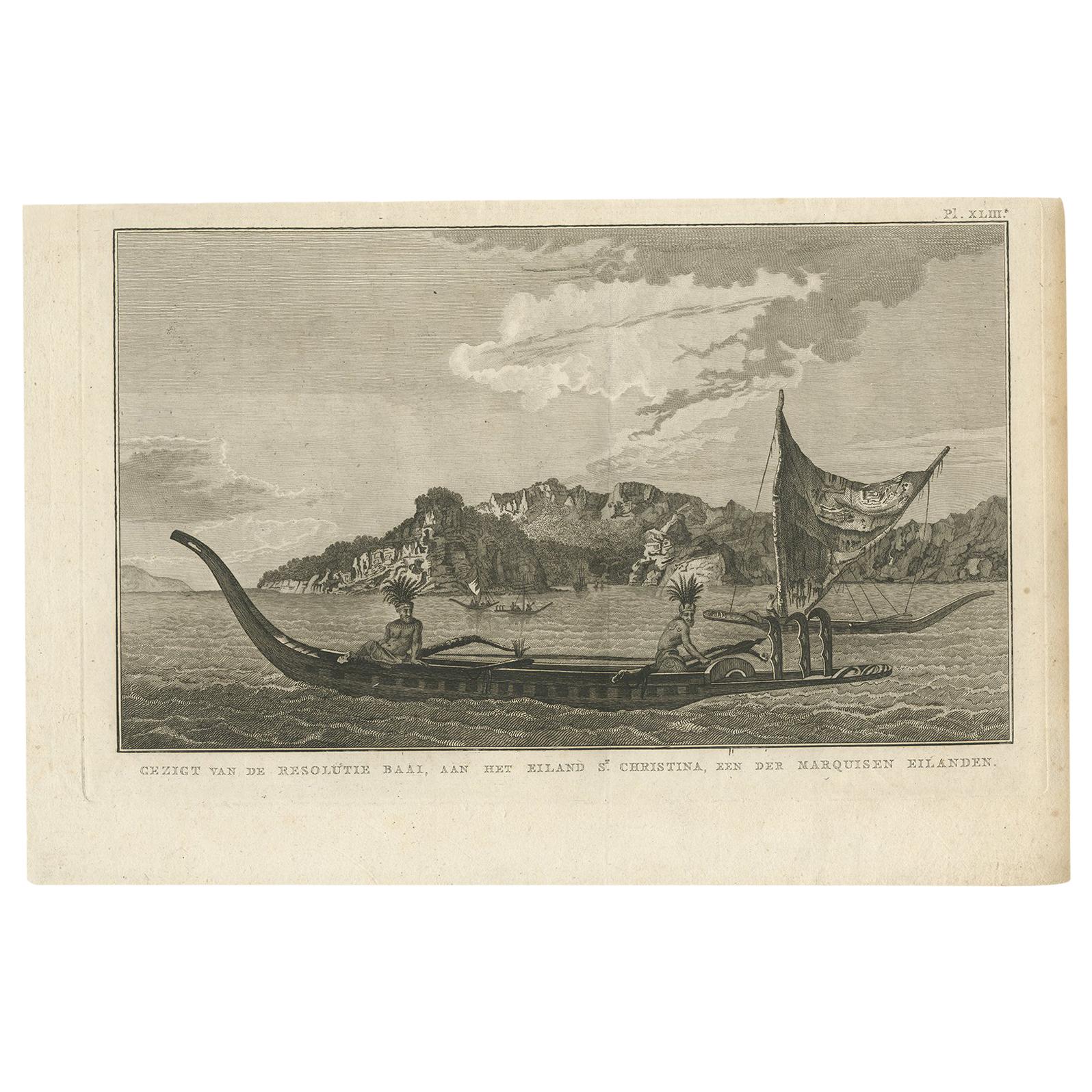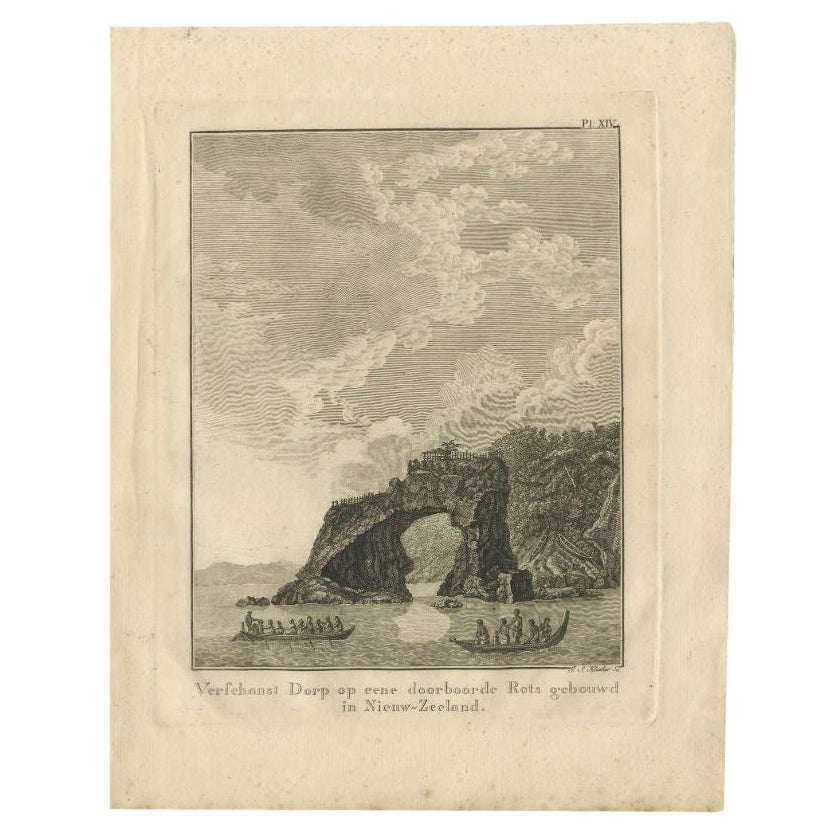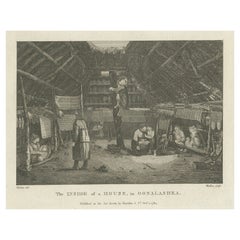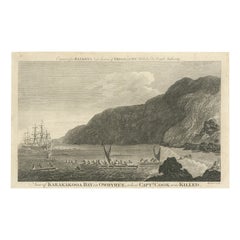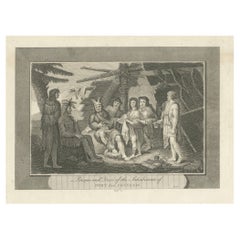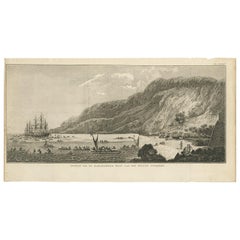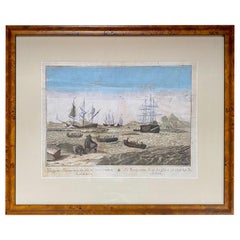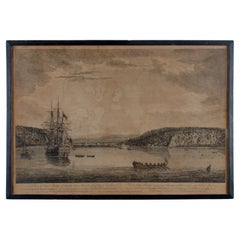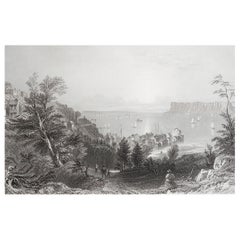Items Similar to Life on the Edge: Unangan People of Unalaska, Late 18th Century
Want more images or videos?
Request additional images or videos from the seller
1 of 6
Life on the Edge: Unangan People of Unalaska, Late 18th Century
$143.78
$179.7220% Off
£107.01
£133.7720% Off
€120
€15020% Off
CA$196.94
CA$246.1720% Off
A$219.04
A$273.8020% Off
CHF 114.38
CHF 142.9720% Off
MX$2,665.47
MX$3,331.8420% Off
NOK 1,460.75
NOK 1,825.9320% Off
SEK 1,369.92
SEK 1,712.4020% Off
DKK 913.52
DKK 1,141.9020% Off
Shipping
Retrieving quote...The 1stDibs Promise:
Authenticity Guarantee,
Money-Back Guarantee,
24-Hour Cancellation
About the Item
This listing is an original antique engraving titled "The INSIDE of a HOUSE, in OONALASHKA." It shows an intimate scene inside a dwelling, presumably belonging to the indigenous people of Unalaska, an island that is part of the Aleutian chain in Alaska. The term "Oonalashka" is an archaic spelling of Unalaska, which reflects the naming conventions of the time when the engraving was made.
In this detailed interior view, we see various activities that depict daily life. There are multiple figures engaged in different tasks: some are sitting or lying down, possibly resting or sleeping, while others appear to be involved in preparing food or working with tools. The construction of the house is prominently featured, with the wooden beams of the roof and the items hung for storage or decoration. The attire of the individuals suggests the traditional dress of the Aleut people.
Given the scene and the date of publication on the bottom right, which appears to be "Oct'r 1, 1784," this engraving would have been made not long after the period of initial European contact with the native populations of the North Pacific region.
- Dimensions:Height: 7.88 in (20 cm)Width: 10.24 in (26 cm)Depth: 0 in (0.02 mm)
- Materials and Techniques:Paper,Engraved
- Period:1780-1789
- Date of Manufacture:circa 1784
- Condition:Good. Light soiling, mostly around the borders, due to age and handling. One long crease or fold and few smaller ones. Ideally this image is to be colored. Study the image carefully.
- Seller Location:Langweer, NL
- Reference Number:Seller: BG-13599-21stDibs: LU3054337996442
About the Seller
5.0
Recognized Seller
These prestigious sellers are industry leaders and represent the highest echelon for item quality and design.
Platinum Seller
Premium sellers with a 4.7+ rating and 24-hour response times
Established in 2009
1stDibs seller since 2017
2,508 sales on 1stDibs
Typical response time: <1 hour
- ShippingRetrieving quote...Shipping from: Langweer, Netherlands
- Return Policy
Authenticity Guarantee
In the unlikely event there’s an issue with an item’s authenticity, contact us within 1 year for a full refund. DetailsMoney-Back Guarantee
If your item is not as described, is damaged in transit, or does not arrive, contact us within 7 days for a full refund. Details24-Hour Cancellation
You have a 24-hour grace period in which to reconsider your purchase, with no questions asked.Vetted Professional Sellers
Our world-class sellers must adhere to strict standards for service and quality, maintaining the integrity of our listings.Price-Match Guarantee
If you find that a seller listed the same item for a lower price elsewhere, we’ll match it.Trusted Global Delivery
Our best-in-class carrier network provides specialized shipping options worldwide, including custom delivery.More From This Seller
View AllDomestic Harmony: Aleut Household Life in Unalaska, 1784
Located in Langweer, NL
This listing is an original antique engraving titled "The INSIDE of a HOUSE, in OONALASHKA." It shows an intimate scene inside a dwelling, presumably belonging to the indigenous peop...
Category
Antique 1780s Prints
Materials
Paper
Final Voyage: The Death of Captain Cook at Kealakekua Bay, Hawaii, 1779
Located in Langweer, NL
Copper engraving from Thomas Bankes’s “New System of Geography” published by Royal Authority c.1775
This engraving for sale depicts a scene of Karakakooa Bay in Owyhee (Hawaii), whe...
Category
Antique 1770s Prints
Materials
Paper
$277 Sale Price
20% Off
Encounter at Lituya Bay: French Explorers Among the Tlingit, 1786
Located in Langweer, NL
The uploaded authentic engraving for sale portrays a scene of interaction between European explorers and indigenous peoples, identified by the caption as occurring at "Port des Franç...
Category
Antique Late 18th Century Prints
Materials
Paper
$249 Sale Price
20% Off
Free Shipping
Antique Print of Karakakooa Bay by Cook, 1803
Located in Langweer, NL
Antique print titled 'Gezigt van de Karakakooa Baai aan het Eiland Owhijhee'. This print depicts Karakakooa Bay in Owyhee/Hawaï.
This engraving for sale depicts a scene of Karakako...
Category
Antique Early 19th Century Dutch Prints
Materials
Paper
$335 Sale Price
20% Off
Resolution Bay on St. Christina: A Glimpse of the Marquesas in Cook's Voyages
Located in Langweer, NL
Antique print that translates from Dutch to "View of Resolution Bay, on the Island of St. Christina, one of the Marquesas Islands." This is a historical print from the Dutch edition ...
Category
Antique Early 19th Century Dutch Prints
Materials
Paper
$230 Sale Price
20% Off
Antique Print of a New Zealand Village Located on a Rock by Captain Cook, 1803
By Cook
Located in Langweer, NL
Antique print New Zealand titled 'Verschanst Dorp op eene doorboorde Rots in Nieuw-Zeeland'. Antique print depicting a village located on a r...
Category
Antique 19th Century Prints
Materials
Paper
$306 Sale Price
20% Off
You May Also Like
Early 18th Century Engraving of the Northern Whale Fishery, circa 1720
Located in Nantucket, MA
Very early 18th century Dutch woodblock engraving of the Northern Whale Fishery, circa 1720, a hand colored engraving illustrating the Dutch whaling flee...
Category
Antique 1720s Dutch Baroque Prints
Materials
Paper
A View of Cape Rouge, Quebec, Canada, Mazell after Capt. Hervey Smyth, c.1760s
Located in Savannah, GA
A View of Cape Rouge, or Carouge, on the Saint Lawrence River, north of Quebec.
Engraving by Peter Mazell after a drawing by Captian Hervey Smyth, published c.1760's, London.
T...
Category
Antique 1760s Canadian British Colonial Prints
Materials
Paper
"Inside of a House in Nootka Sound" (Canada) from Captain Cook's 3rd Voyage
By John Webber
Located in Alamo, CA
"The Inside of a House in Nootka Sound" is an engraving created by William Sharp (1749-1824), from a drawing by John Webber (1752-1793), who was the artist on Captain James Cook's 3rd and final voyage of discovery. It is Plate 65 in "A Voyage to the Pacific Ocean Undertaken by the Command of His Majesty, for Making Discoveries in the Northern Hemisphere", the official British Admirality sanctioned journal published upon completion of the voyage in London in 1784 by Strahan & Cadell.
This engraving is presented in a Koa wood frame and a white mat. There are occasional tiny faint spots, but the print is otherwise in very good condition. Koa wood is legendary in Hawaii. Not only is this amazing wood native to Hawaii, but it is known for the deep rich colors and varied grain pattern. Koa has an honored heritage in Hawaii and is highly revered and sacred. The word “koa” means “warrior” in Hawaiian. The warriors of King Kamehameha the Great, created canoes and weapons from a wood plentiful on the Big Island of Hawaii. This wood became synonymous with the warriors themselves, and it became known as koa.
There are three other engravings listed form the official journal of Captain Cook's 3rd voyage available that are presented in identical Koa wood frames and mats. They would make a wonderful grouping for a display of 2, 3 or 4 prints. Please see listings: LU117324682432, LU117324684022, LU117324684062. A discount is available for a grouping depending on the number of items included.
Nootka Sound is on the west coast of Vancouver Island, British Columbia, Canada. It was explored by Captain Cook in 1778 after he discovered Hawaii during his 3rd voyage. He originally named it King George's Sound, but did record Nootka Sound, which he thought was its native name. Hawaii was originally called The Sandwich Islands in honor of The Earl of...
Category
1780s Realist Interior Prints
Materials
Engraving
Original Antique Print of Sing Sing, New York. Dated 1837
Located in St Annes, Lancashire
Great print of Sing Sing
Steel engraving after W.H Bartlett
Published by Virtue 1837
Unframed.
The measurement is the paper size.
Free shipping
Category
Antique 1830s English Other Prints
Materials
Paper
Sandwich Islands Canoe (Hawaii): Framed 18th C. Engraving Captain Cook's Journal
By John Webber
Located in Alamo, CA
"A Canoe of the Sandwich Islands, the Rowers Masked" is an engraving created by Charles Grignion, from a drawing by John Webber (1752-1793), who was the artist on Captain James Cook's 3rd and final voyage of discovery. It is Plate 65 in the atlas of "A Voyage to the Pacific Ocean Undertaken by the Command of His Majesty, for Making Discoveries in the Northern Hemisphere", the official British Admiralty sanctioned journal published upon completion of the voyage in London in 1784 by Strahan & Cadell.
This famous image of ten Hawaiian rowers transporting a priest who is carrying a feather-covered image of Kukailimoku, the Hawaiian god of war. The priests and paddlers are all wearing gourd masks in their double-hulled canoe with an upright lateen woven sail. Each hull was shaped from a single large Koa log harvested from island rainforests, where they were carved before being transported to the coast.
This engraving is presented in a Koa wood frame and a white mat. There are occasional faint spots, but the print is otherwise in very good condition. Koa is the same wood as was used to make the canoe. Koa wood is legendary in Hawaii. Not only is this amazing wood native to Hawaii, but it is known for the deep rich colors and varied grain pattern. Koa has an honored heritage in Hawaii and is highly revered and sacred. The word “koa” means “warrior” in Hawaiian. The warriors of King Kamehameha the Great, created canoes and weapons from a wood plentiful on the Big Island of Hawaii. This wood became synonymous with the warriors themselves, and it became known as koa. The frame measures 20.75" high, 26.75" wide and 0.88" deep.
There are three other engravings listed from the official journal of Captain Cook's 3rd voyage available that are presented in identical Koa wood frames and mat (LU117324682022, LU117324684052, LU117324684062). They would make a wonderful grouping for a display of 2, 3 or 4 prints. A discount is available for a grouping depending on the number of items included.
Hawaii was discovered by Captain Cook (1728-1779) during this voyage. Hawaii was originally called The Sandwich Islands in honor of The Earl of Sandwich...
Category
1780s Landscape Prints
Materials
Engraving
Original Antique Ethnographical Print, Figures, New South Wales, Australia, 1809
Located in St Annes, Lancashire
Wonderful ethnographical print.
A copper-plate engraving after Lesieur
Published by Sherwood, Neely & Jones. Dated 1809
Unframed.
Category
Antique Early 1800s English Folk Art Prints
Materials
Paper
